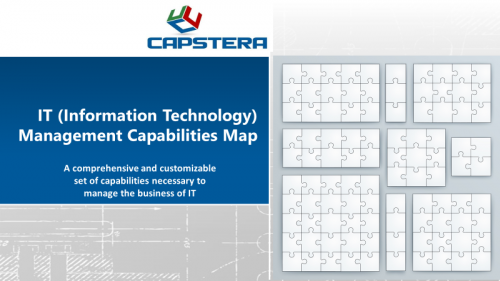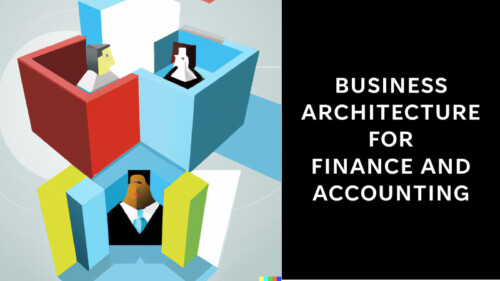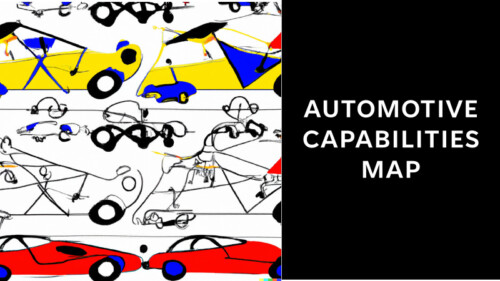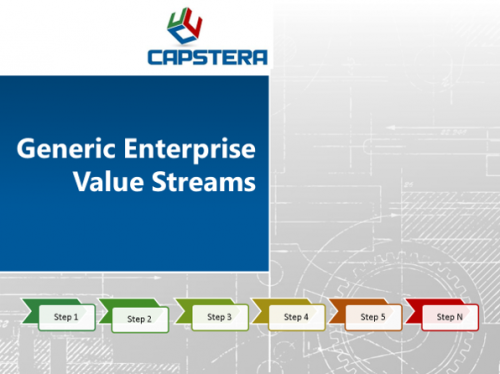Business Architecture for Supply Chain Management
Price range: U.S. $999 through U.S. $2,999
Business Architecture for Supply Chain Management is a compilation of essential artifacts and customizable deliverables for creating a business architecture for the supply chain management function. The SCM Capabilities map comprises approximately 230 capabilities across three levels, plus a treasure trove of other deliverables, templates, and artifacts.
(Note: As the Business Architecture for Supply Chain Management is a digital product, we do not accept returns and will not issue refunds. So, please read the product description carefully before purchasing.)
Emerging technologies are revolutionizing the field in today’s dynamic and competitive world, where supplies are sourced globally. Given these factors, the Supply Chain Management function’s strategic importance and value are undeniable. SCM has emerged from being a buyer of raw inputs to a strategic business partner that can add value through the sourcing life cycle and beyond.
Transforming the Supply Chain Management function from just a procurer of materials to a strategic business partner requires a holistic plan and a foundation based on sound structural constructs. Business architecture is the foundation that will help a structured and streamlined transformation of the SCM function.
What is Business Architecture for Supply Chain Management?
Business Architecture for Supply Chain Management is a treasure trove for leveraging the concepts and artifacts of business architecture for SCM transformation. The deliverables comprise:
- Supply Chain Management Business Capabilities Matrix: A comprehensive and coherent of ~230 capabilities nested into three levels. The SCM Business Capabilities map is available in PowerPoint, Excel, and Word formats.
- SCM Capabilities Definitions: Capability definitions up to Level 3.
- Key Performance Indicators aligned to Capabilities (KPIs for Level 2 capabilities.)
- SCM Business Capability Profile Card Template: A well-structured template to document a Capability Profile on a Page.
- Supply Chain Management Value Streams and Processes: A mix of detailed and brief Value Streams and Processes.
- Supply Chain Management Business data and information entities: A mix of subject areas, data, and information entities.
- Supply Chain Management Operating Models Overview: A very brief overview of the various SCM Operating Models.
- Supply Chain Management List of Roles: A listing of common Supply Chain Management Roles.
- Supply Chain Management Glossary of Terms: Brief definitions of Supply Chain terms.
- SCM Transformation Framework: A simple one-page framework you can customize.
Bonus Deliverables:
- Business Capability Modeling Overview
- A Practical Guide to Business Architecture
- Capability-Relationship Mapping Template
All the deliverables are in editable formats, allowing you to customize them to your needs.
How to Use Business Architecture for Supply Chain Management:
- Jumpstart and accelerate the process of creating Business Architecture for the Supply Chain Management function.
- Leverage the artifacts to implement a Business Architecture led Supply Chain Management Transformation, including a capability-based Transformation Roadmap.
- Capture the essence of the Supply Chain Management function using structural elements such as Business Capabilities, Value Streams, and related components.
- Use the deliverables to contribute SCM Team’s perspective and inputs for the overall Enterprise Business Architecture endeavor.
Who Uses the Business Architecture for SCM:
- Business architects are the primary users to leverage the artifacts and deliverables and customize them to the company’s needs.
- The SCM leadership can use the deliverables to capture the essence of their structural underpinnings and use it for transformation.
- The enterprise teams responsible for crafting a company-wide business and enterprise architecture will find these post-customized deliverables invaluable inputs to their endeavor.
What are the Benefits of buying the SCM Business Architecture Toolbox?
- Pre-built and customizable deliverables allow for an Accelerated Time to Completion.
- It helps teams avoid the Blank Slate Syndrome and functions as a Springboard for Success.
- Allows teams to focus on the company’s 20% that is vital and the secret sauce and adopt the remaining 80% out of the box.
How did you build this Business Architecture Resource?
We are software entrepreneurs and consultants who have done countless business architecture and transformation engagements at several Global 2000 companies. We harnessed the accumulated knowledge over multiple engagements and several years to craft these deliverables.
Will Biz Arch for SCM Meet all our Enterprise needs?
That is an interesting and important question to ask and answer. Our comprehensive and in-depth deliverables may not meet your company’s unique needs. Many factors – size, location, business model, management structure, et al. – will make a difference in how much an off-the-shelf artifact fits your company like a glove. We strive for the deliverables to be a springboard, not the final deliverable – the internal teams will have to customize it and tailor them with specific data and context.
A Perspective on the Cost:
We get two varying perspectives on the cost of our products. Why is it so cheap? Or why is it so expensive? In our (biased) opinion, the cost is meager compared to the value the Supply Chain Management Business Architecture can offer enterprises.
Scenario 1: A cross-functional team of business architects, enterprise architects, and SCM domain experts spend countless hours in conference rooms over 5-6 months to craft these deliverables. Instead, you can get started immediately, reduce your efforts by 60-75%, and tailor the deliverables to your unique needs.
Scenario 2: A company hires a consulting firm to develop these artifacts. They spend 12-14 weeks involving the cross-functional teams and eliciting the knowledge to create deliverables. A typical consulting endeavor may cost $100,000 – $250,000 (or more), depending on the firm and geography.
Instead, our SCM Business Architecture cost is commensurate with a few pizza lunches and a celebratory dinner at the end.
No standard off-the-shelf digital products can fully meet your company’s needs. Therefore, we strive to create a baseline with about 60-75% relevance, a jump-off point for tailoring the products to your needs.
A Note on the Templates, Tools, and Artifacts:
Most business architecture tools, templates, and deliverables are like a Swiss Army knife that one can repurpose for different enterprise goals and objectives.
As a generic, multipurpose set of tools, templates, and deliverables, we strive to meet 60-80% of a firm’s needs, not 100%. Please contact our business architecture consulting team for paid engagements if you need additional customization.
- Business Capabilities Matrix: A functional area occupies one box in many business capability maps. Some may wonder why we decomposed the capabilities into 100X or more capabilities. We humbly submit that one box or entry in a one-page diagram is Wall Art, not an implementation tool. Decomposing capabilities into a nested list of granular items will help understand a capability’s depth, breadth, scope, and importance. It is also possible that some capabilities in our matrix may not be relevant to you. Similarly, we may have captured and documented some relevant and essential capabilities of your firm.
- Capability Definitions: The definitions do NOT cover each and every capability as, at a certain level of granularity, the capabilities are self-evident, and their meaning is self-explanatory. We try to provide definitions at a granular level we think is appropriate. Please feel free to add, expand, or modify the definitions.
- Capability KPIs (Key Performance Indicators): We added a few KPIs for capabilities (mostly at Level 2) to get you started. You may not measure these KPIs in your company and have a different set of metrics. Again, use them as a springboard, and not debate the applicability to your firm.
- Capability Profile Card Template: The capability profile card is a template with a few details partially filled in to get you started. We cannot complete this information as it is internal to your company. You can also determine at what level of granularity you will need to define these capability profile cards. If you need help, our consultants are available for hire.
- Processes and Value Streams: Each process and value stream is detailed as Level 2 Steps. These are NOT full-fledged Process maps. And the list may not cover how your company’s processes work and flow. Please use these as a starting point and tailor them to your enterprise needs.
- Operating Model Archetypes: Understanding the operating model is essential to transforming the function, re-engineering processes, re-platforming systems, etc. However, defining a Target Operating Model is complex, time-consuming, and often expensive. What we offer here are basic ideas of typical operating models. Please do not construe them as comprehensive or exhaustive. Use this one-pager to foster a discussion among your team so that you can understand your current operating model and the desired target state.
- List of Roles: Understanding a function’s roles and structural underpinnings is essential for making informed choices about various transformation objectives and implementation approaches. Our list of roles is generic and broad-based and does not account for any of your company specifics – size, location, sector, competitive landscape, and business model. Hence, use our list of roles to customize your organization and reflect its structure. Please also realize this is not an Org Chart.
- Business Data and Information Entities: We provide essential data and information entities. This deliverable aims for business architects to understand and appreciate the role of data and information in today’s enterprise. This should NOT be construed as a Data or Business Information Model. Ideally, your data architecture team will already have such models.
- Glossary of Terms: The glossary of terms is not exhaustive or complete. We suggest that business and enterprise architects consider the company’s terminology and ensure a common understanding of the terms. If, as an example – there is no clear definition of “Customer,” “Lead,” “Campaign,” or any of the other myriad terms, it could lead to solution and process design flaws.
- Transformation Framework: The transformation framework reflects our thinking of what it entails to transform a function, department, or enterprise. Not every transformation is similar in size, scope, or complexity. Use it to reflect a picture of your enterprise transformation.
Provisos:
- We cannot accept refunds, returns, or replacements as the products are digital deliverables.
- Please realize that a generic deliverable may or may not fully apply to your company’s needs in some circumstances.
- We do not offer implied or explicit warranties, which are sold as-is.
- The sale does not include customization, product support, or implementation help.
- Please review our standard Terms of Service.
Need Customization Help?
Business Architecture for Supply Chain Management
Price range: U.S. $999 through U.S. $2,999





